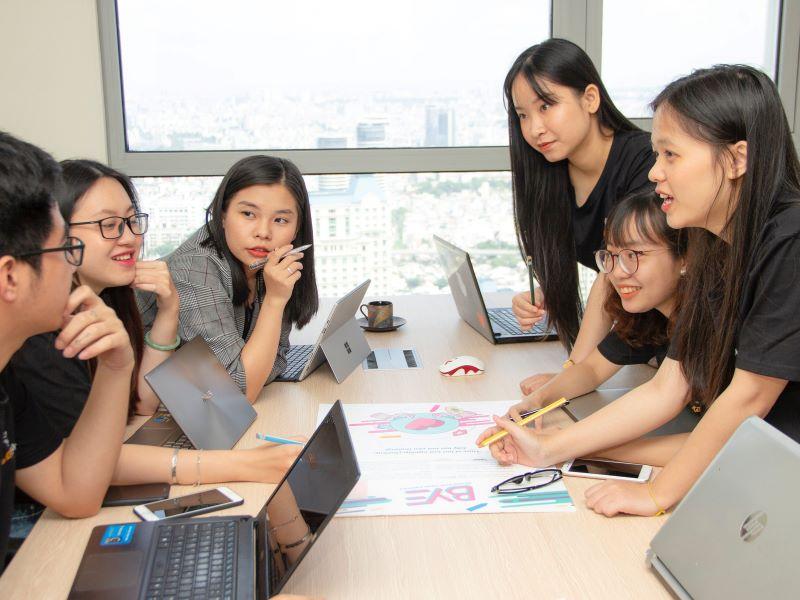
Bringing international and intercultural dimensions into your programmes
Jeanine Gregersen-Hermans and Karen M. Lauridsen address how educators may create an internationalised learning experience for all students by including global and intercultural dimensions in curriculum design and delivery

In an increasingly digital and connected world, the concept of internationalisation at home, by which students can learn and engage with global perspectives regardless of their location, is becoming more important. Even when students opt for local careers, their work will be impacted by increasing diversity in their own communities, by global developments and by events in other geographic areas. Introducing international and intercultural dimensions into university courses are therefore key elements that support students in their preparation for this future.
Leveraging the benefits of diversity
A student cohort with diverse academic, linguistic and sociocultural backgrounds is often promoted as an enriching experience for all students, helping graduates develop competences necessary to succeed in a globalised world. However, a number of barriers prevent students and lecturers benefiting from this diversity. Students often arrive on a course with distinctly different bodies of knowledge and expertise, and culturally different expectations for appropriate and effective classroom behaviour. In addition, they may experience cultural differences in values and communication styles and in language backgrounds and proficiency.
- What do equity, diversity and inclusion mean in the higher education context?
- Resources to help universities boost staff diversity
- How can HE institutions become fairer and more inclusive?
Lecturers can alleviate these perceived challenges by creating an internationalised learning experience that acknowledges the varied student perspectives and educational backgrounds and enables them to set their learning within a global context.
Beginning with the end in mind
Educators should start by determining what international and intercultural competences all their graduates are expected to master by the end of their programme of study. Once these competences have been identified, often in collaboration with external stakeholders such as employers, they should be reflected in the intended learning outcomes for the programme, which in turn should be used to inform the development of new or existing curricula. The course content, teaching and learning activities and assessment forms should all be designed to guide students towards achieving these learning outcomes.
Teaching and learning activities
The international and intercultural dimensions of a given programme will vary according to the content or disciplinary knowledge to be learned. Students should be given the opportunity to develop both discipline-specific and generic intercultural competences as a result of the learning activities. This does not happen automatically, but lecturers can facilitate this with short activities fostering student engagement in class, as well as:
- group assignments and projects, where students work together in multicultural teams made up of “local” and international students or students from different disciplinary backgrounds or different ethnic, sociocultural or socio-economic backgrounds
- individual or group assignments in which students work with peers from another higher education institution. This may be done in individual virtual exchange, collaborative online international learning (COIL,) a pedagogy in which students from different partner institutions work on joint projects, or blended mobility, which requires a combination of short group visits and online collaboration.
Group assignments preferably include experiential learning activities that do not focus solely on academic content. These activities also need to draw on the different perspectives and experience that the students bring to the programme, and their culturally different approaches to collaboration and group work. Moreover, for intercultural learning to occur the activities need to invite students to reflect on their own and others’ values and behaviours and how these affect cross-cultural collaboration in their groups.
International and intercultural learning can be rapidly advanced using physical mobility, but global perspectives may also be taught and learned by students who do not have the opportunity to study abroad or engage in virtual mobility.
International and intercultural competences
For lecturers to facilitate students’ learning in diverse groups, they need to possess or develop their own international and intercultural competences. In their roles as coaches or facilitators:
1) Lecturers must possess sufficient knowledge of the world to connect their disciplinary content with wider evolving societal trends. This allows them to ask appropriate questions regarding relevant international and intercultural dimensions and link these to assignments that encourage students to address local or global societal needs through the application of their academic discipline.
2) Lecturers should understand how to turn an experience of diversity into inclusive intercultural learning. By recognising intercultural incidents as opportunities for sharing and learning, and by facilitating intercultural group dynamics, the lecturer can leverage diversity in the student cohort to the benefit of all. This includes allocating time in the programme for intentional intercultural dialogue to spur the students’ awareness of diverse perspectives and experiences; to support a clear understanding of others who think or act differently; and to encourage openness and curiosity for collaboration within their peer groups, locally and globally.
3) Lecturers must be reflective practitioners and take an ethical stance in programme design and delivery. This requires an awareness of their own norms, values and biases, and of how these may influence decisions in programme design and classroom behaviour. They should recognise the fine ethical line between facilitating student learning and advocating their own personal values and beliefs, thereby promoting critical thinking and socially responsible behaviour.
To create effective internationalised learning experiences, lecturers should assess and refine their teaching practice through ongoing reflective processes. The global landscape is ever changing and so the internationalisation of higher education must change with it.
Jeanine Gregersen-Hermans is a senior researcher at the Sustainable International Business research centre at Zuyd University, and affiliated faculty at the Centre for Higher Education Internationalisation at the Università Cattolica del Sacro Cuore.
Karen M. Lauridsen is associate professor (emerita) at Aarhus University and affiliated faculty at the Centre for Higher Education Internationalisation, Università Cattolica del Sacro Cuore.
If you would like advice and insight from academics and university staff delivered direct to your inbox each week, sign up for the Campus newsletter.
Additional Links
Inspiration and advice on internationalising your higher education programmes may be found in these resources:
Educational Quality at Universities for inclusive international Programmes
Internationalising Higher Education Programmes. An Educational Development Perspective


